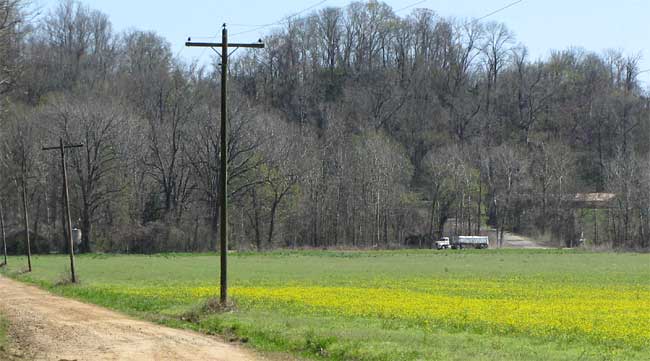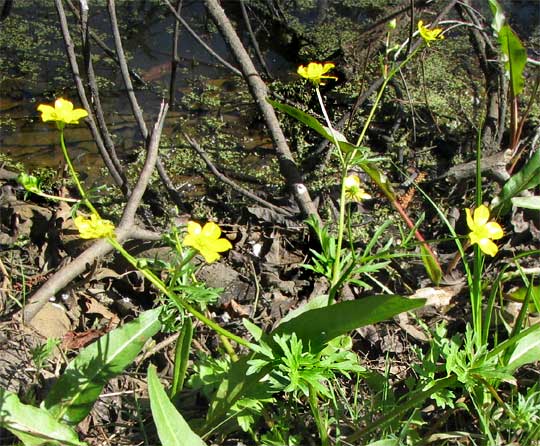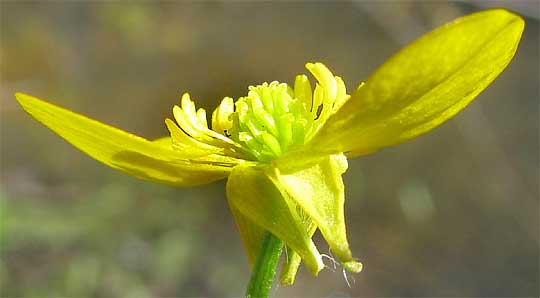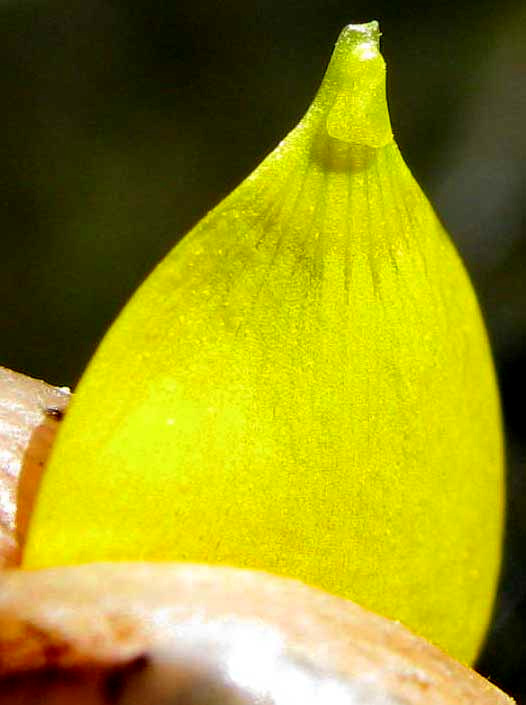Excerpts from Jim Conrad's
Naturalist Newsletter

from the the March9, 2009 Newsletter, issued from the forest near Natchez, Mississippi; elevation ~400ft (120m), ~N31.47°, ~W91.29°:
FIELD AWASH WITH BUTTERCUPS
Above you see part of a large field in the Mississippi River floodplain near Natchez. Behind the truck in the picture the road climbs into the loess-mantled uplands where Natchez and I are situated. The field this side of the truck is yellow with untold millions of buttercups.
By "buttercup" I mean a member of the genus Ranunculus of the Buttercup Family, the Ranunculaceae. About 400 Ranunculus species are recognized and many are invasive weeds spreading far beyond their native grounds, so figuring out which buttercup you have can be a challenge. In Mississippi about 18 species wild- growing species are listed. The ones so prettily abloom in the field are Bulbous Buttercups, also called St. Anthony's Turnips, RANUNCULUS BULBOSUS. Bulbous Buttercups are invasive weeds from Europe. You can see the plant's stiff, slender stems, deeply divided leaves and five-petaled, yellow flowers below.

Buttercup flowers are easy to identify because of their special anatomy, shown below:

In that picture the leafy, triangular items pointing downward are the flower's five sepals. I've removed two of the flower's five petals to show the sexual parts in the center. The longer, incurving, yellow things surrounding the greenish center are numerous male stamens, while the greenish center is composed of numerous female pistils, each composed of a stigma, style and ovary. Having both so many stamens and pistils is a little unusual in the flower world, but typical of the Buttercup Family. A more representative flower of "average" angiosperms would have maybe five stamens and a single pistil.
There's one more little buttercup-flower-recognizing trick that's fun to know about. Look below:

At the very top of that buttercup flower petal held between my fingers, notice the triangular scale. That's a nectariferous, or nectar-producing, scale meant to attract pollinators. Anytime you want to make sure you have a buttercup blossom, check for such a nectar-producing spot, which may be a pit or mere spot instead of such a conspicuous scale.
Bulbous Buttercups enjoy considerable fame as homeopathic remedies. Concoctions made from them are said to act upon muscular tissue and skin, and particularly chest walls, and may be used against delirium tremens, spasmodic hiccough, chronic sciatica and much more. On the internet you can buy 75-80 pills based on this species for $8.99, so I just wonder how much the buttercups in that one field would be worth in pill form!
This species is also regarded as harmful to livestock when eaten raw, but loses its poison when dried as hay. Birds such as bobwhites and turkeys will thrive on the abundant mature fruits resulting from all those flowers.